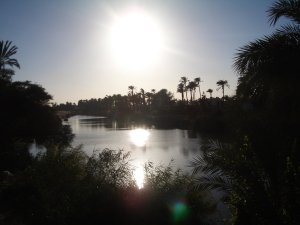Hey everyone! It has been a really busy week, full of exams and papers and pulling all-nighters. Consequently, I haven’t posted for a while, so here are the highlights of the last ten days:
BELIEVE IT OR NOT
We had a nice little blizzard here in Jerusalem. Since snow is so rare here, everything in the city shut down and our classes were canceled because none of our professors would come teach–people just don’t leave their houses when it snows here, and there aren’t any snowplows.
AND THEY CAME TWO BY TWO…OR THREE
We went to the Jerusalem Biblical zoo, which has the actual ark built by Noah. Seriously. : )
IN THE VALLEY OF ELAH
The field where David slew Goliath doesn’t have any monuments or churches built there, so it’s easy to imagine the battle of the Philistines taking place there.
Some thoughts I had on David v. Goliath:
“And Saul armed David with his armor, and he put an helmet of brass upon his head; also he armed him with a coat of mail. And David girded his sword upon his armor, and he assayed to go; for he had not proved it. And David said unto Saul, I cannot go with these; for I have not proved them. And David put them off him. and he took his staff in his hand, and chose him five smooth stones out of the brook, and put them in a shepherd’s bag which he had, even in a scrip; and his sling was in his hand: and he drew near to the Philistine.”
-1 Samuel 17:39-40
Because David tended his father’s sheep instead of going to war, he had never worn armor or wielded a sword. For that reason, when he put on the helmet, mail, armor, and sword, he wasn’t used to using it. Even though they were formidable weapons, he hadn’t practiced with them, so he removed the armor and put down the sword and took up his shepherd’s sling instead. He had already used his sling to kill a lion and a bear while tending his father’s sheep. In Ephesians 6:11, we are instructed to “put on the whole armor of God, that ye may be able to stand against the wiles of the devil.” However, we cannot wield weapons or be protected by armor that we have never “proved” before. We can’t just put on the armor of God in times of temptation. Like David with his sling, we will be most effective with weapons that he have practiced and proved. Only if we seek to put on the armor of God every day will we be able to use it to defend ourselves in times of trial.
Any thoughts on this, or on David and Goliath? I’m interested in what you guys have to say.
RED CRESCENT SOCIETY HOSPITAL
Madison and I volunteered at the hospital nearby; we fed the babies there.
































